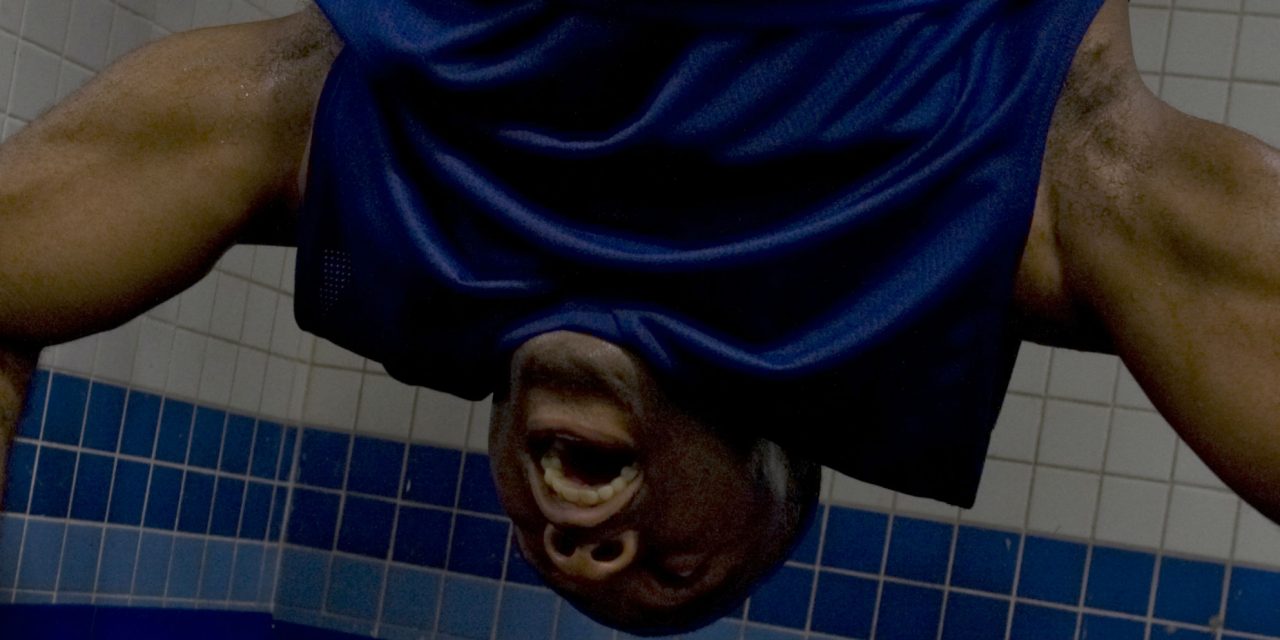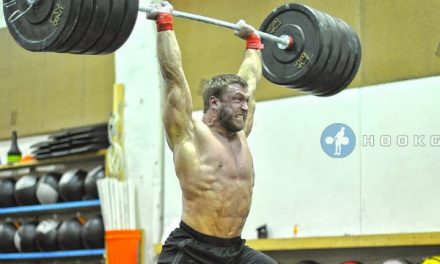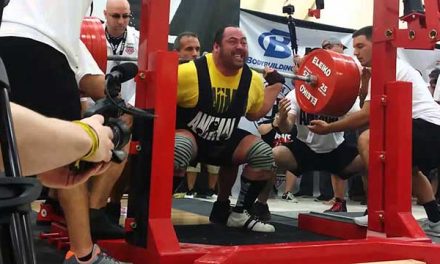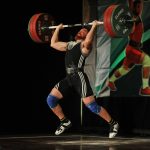Article featured in Box Life Magazine’s October/November issue.
by: Adam Sayih, CSCS
“You want me to do what?” is pretty much what I hear every time I explain a WOD with the handstand push-up. You either love it or hate it but what I’ve learned from experience is that for most people it’s the latter. There’s a bunch of great variations and kipping styles, but achieving a strict handstand push-up is going to take some hard work and grinding reps. Check out these assistant lifts and how to program them to accomplish this upside-down feat.
Top Half Strict Press

How to do it: The first repetition will be performed as a push press. This is because the weight you’ll be using will be heavier than you can typically strict press for reps. Once you have the bar overhead, you’ll bring the barbell down to the forehead then press it back up. Continue strict presses from the forehead to complete extension for reps.
Why it works: Partial reps have been around as long as weight lifting itself. The point is to strengthen specific weak points in a movement that hold back larger movements. For example, many powerlifters who struggle to lock out bench presses will place boards on their chest and perform board presses with more weight than they can typically perform to strengthen that section of the movement. Don’t get paranoid by the no-rep police because you’re simply doing a progression. Since strict pressing your own bodyweight is something you can only really expect from more advanced athletes, this feat isn’t necessary to perform handstand push-ups. In the handstand push-up, the range of motion ends at the head so we’re simulating that same range of motion with a barbell. Only working the top half means the lift is more specific to handstand push-ups and since you’ll be able to use more weight this way, you’ll get stronger at the handstand push-up quicker. This is not a replacement for your standard overhead work.
Handstand Push-up Plate Progression

How to do it: Stack 10-15lb plates and place the abmat on top. Perform a normal handstand push-up until your head touches the abmat. The number of plates you use depends on your current strength level.
Why it works: Jumping straight into a full range handstand push-up is very difficult, especially for beginner CrossFitters. This allows you to slowly work your way down to the floor. If you can’t even go half way down, how do you expect to make it to the floor safely and then press up? This progression allows you to get stronger on a weekly basis as well as proving a safe means to do so. Crashing your head on the floor isn’t the best method and this also gives you a standard to meet every rep. You can do partial reps without this set-up but I’ve noticed as people get fatigued, they tend to forget how low they can go. Also, you don’t have a means of measured progress. Guessing how low you went last week won’t be as practical as knowing you did four plates two weeks ago, three plates last week, and now two plates this week. Measured progress will help you keep on track with goalkeeping.
Handstand Holds
How to do it: Flip up on to a wall and hold yourself with locked arms.
Why it works: If you lack the strength to hold yourself in the handstand position for a good 45 seconds to a minute, you can’t expect to struggle with this movement while cranking out some handstand push-ups. Yes it’s basic, but you need to master the foundations before you can progress!
Dumbbell Shoulder Press


How to do it: Start with the dumbbells at your shoulder then press overhead in a controlled manner. Kettlebells can be used as well.
Why it works: Basic strength training will definitely boost the handstand push-up process. I picked dumbbells specifically because you would be surprised how much shoulder imbalances are exposed with dumbbell movements. Yes, barbells are known to be king for exercise movements, but you won’t know if your right arm is lagging behind and the left side has been compensating. We need total upper body strength to dominate the handstand push-up.
Putting it all together:
Movements get better with practice, more specifically, frequent, quality practice. Do these progressions several times per week and be sure to track progress. For the top-half press, try to increase the weight by 5-10lbs every week. For the plate progression, try to remove a plate every week or two. For the dumbbell press, try to increase the weight 2.5-5lbs per week. For the handstand holds, try to hold the position 10-15 seconds longer than before. This kind of linear progress will make you dominate the handstand push-up in no time. The handstand push-up is not an overnight fix. It will take grueling reps and hard work to reach this goal but with consistent, hard work you can accomplish anything.
Sample week:
Monday
Plate Progression
-3xFailure
Top Half Press
-3×5 @ 90% of Strict Press Max. Do not include initial push-press.
Handstand Hold
-1 Set till failure
Wednesday
Plate Progression
-1xFailure. Try to beat your first set from Monday
Dumbbell Shoulder Press
-3×8, heavy but perfect form
Handstand Hold
-1 set till failure. Beat Monday’s time.
Friday
Plate Progression
-5xBest set of the week minus two reps. This is to increase the volume of work in the specific lift
Top Half Press
-2×3 +5lbs from Monday
Handstand Hold
-1 set till failure. Beat Wednesday’s time.
Cheers,
Adam
Stay connected!
Here’s how to follow us:
Instagram: @GentlemanAndMeathead
Facebook: Facebook.com/GentlemanAndMeathead
Twitter: @ClassyMeathead








